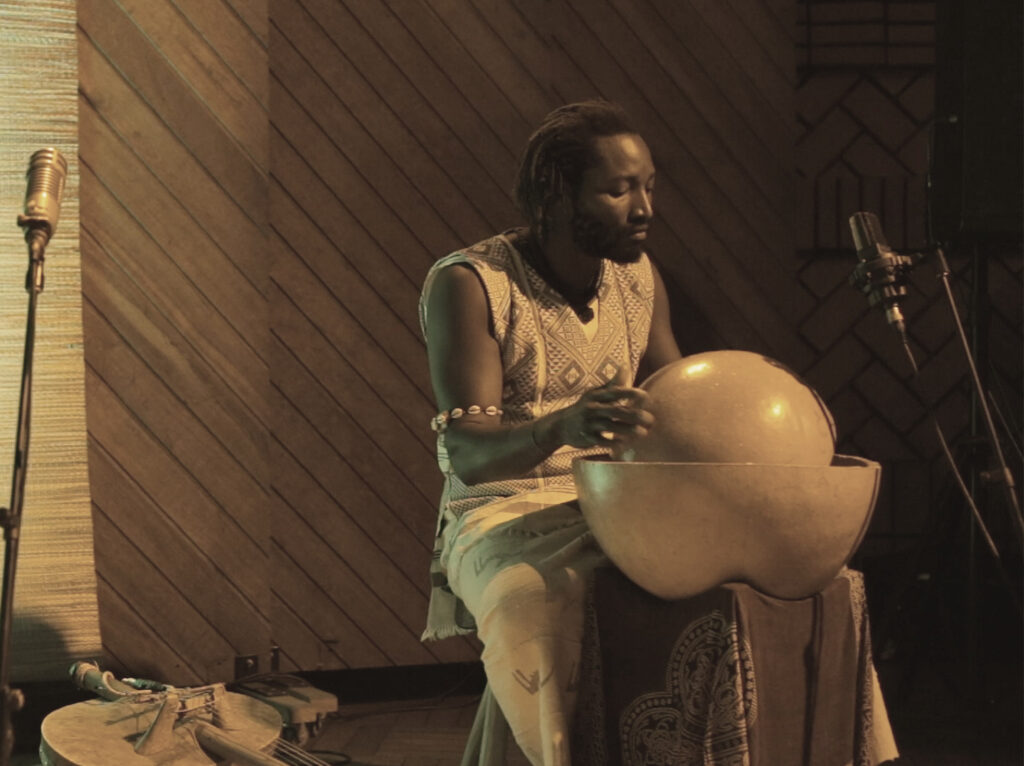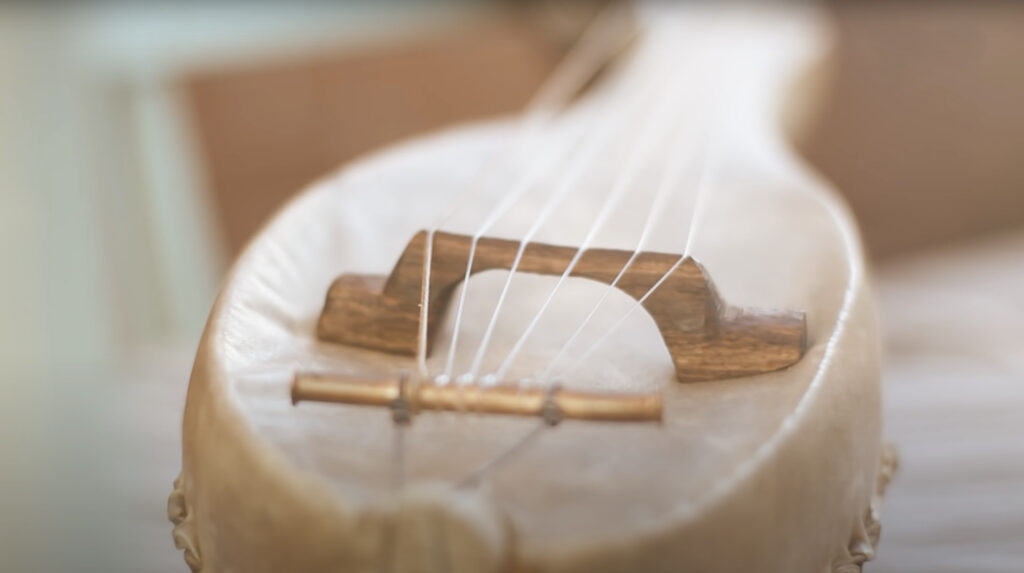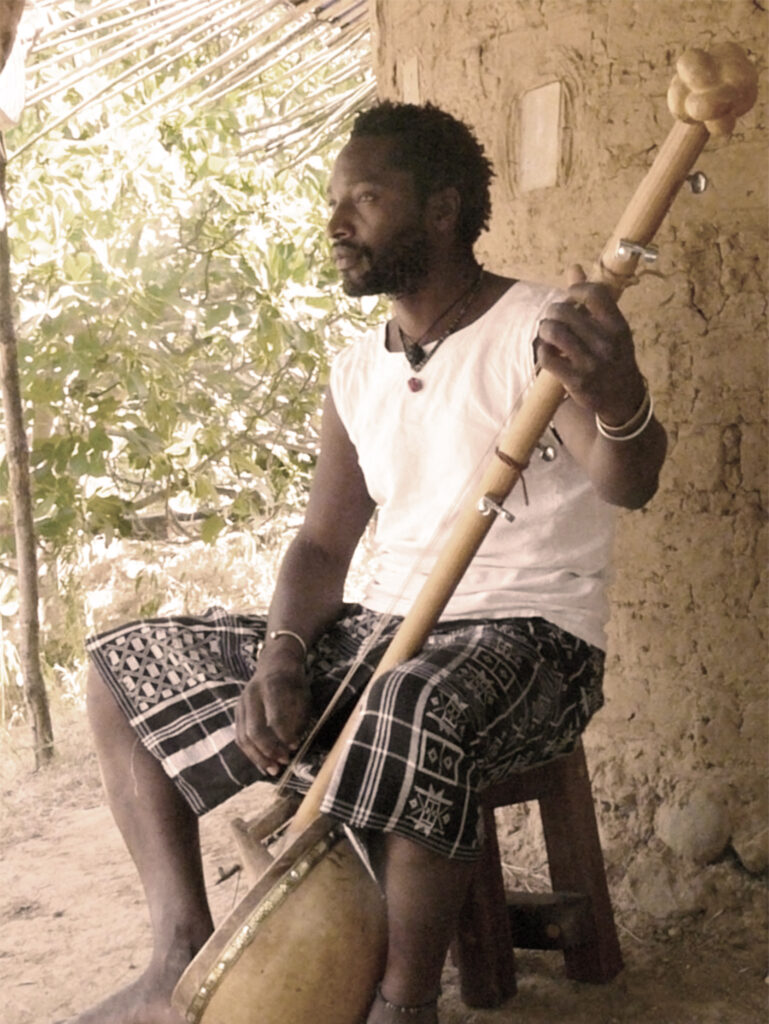The instruments that accompany my journey formpart of a story that has been happening for thousands of years. Time has preserved its essence,its timbres and tones, barely altering the meaning and rhythm with which each man and woman have made to vibrate and sound. His music has accompanied rituals, ceremonies, weddings, births, funerals and celebrations initiations. They have made it rain, give thanks, germinate, unite, say goodbye, receive and heal… Thousands of verbs are have uttered over the voices of their strings in various languages, times and places, but every time they sound again summon all that experience accumulated over time…
TRADITIONAL SONGS FROM GUINEA BISSÁU
TINA
Originally an instrument played mainly by women, but in modern times it has become the instrument par excellence of Guinean urban culture. Originally composed of calabash, one filled with water and the other smaller one inverted and placed in the water. With this simplicity, it becomes one of the most impressive percussion instruments of the African continent, with its aquatic sound, deep and full of melodic tenderness ideal for accompanying voices.

TONKORONGH
This is the most common string instrument in West Africa. It exists in almost all cultures of this region with its corresponding variants, depending on ethnic group. It is commonly used both for parties and for religious ceremonies or initiations, funeral rituals and other celebrations.

SIMBI
Typical string instrument of the Balanta people. Made from calabash, leather, a neck and three strings. It is generally used for festive celebrations, but also for some night-time celebrations. Fea- turing an inexhaustible rhythmic potential.

